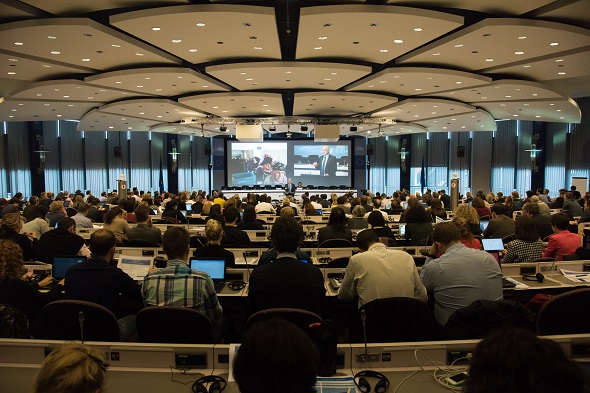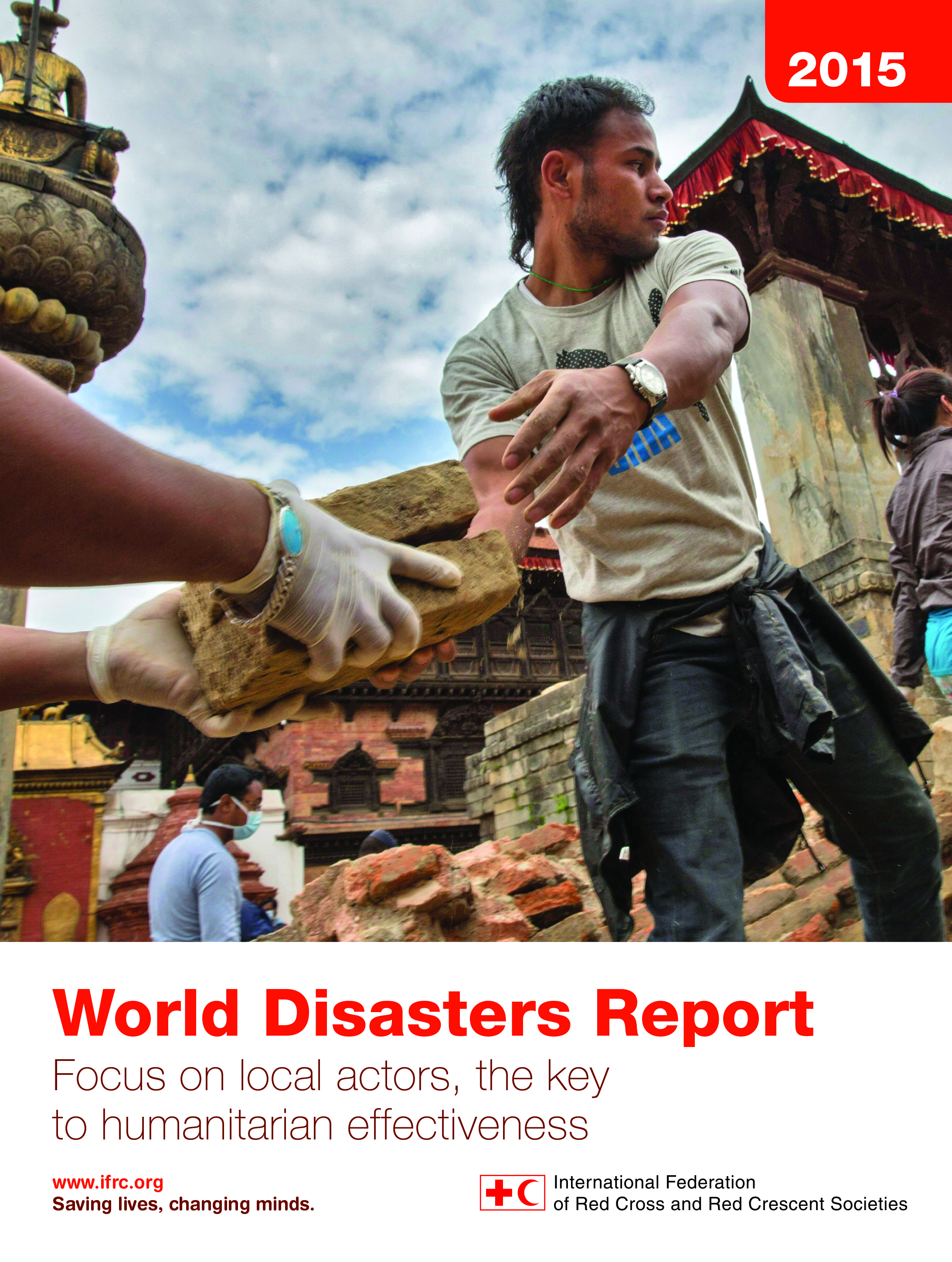ECHO Annual Partners Conference: Brussels launch of World Disasters Report 2015
On 12 and 13 November, the European Commission’s Directorate General for Humanitarian Aid and Civil Protection (ECHO) held its 2015 Annual Partners Conference with the theme of "Humanitarian assistance in a changing world”. Each year, the conference gathers representatives from over 200 partner organisations that implement EU humanitarian aid around the world – including numerous National Red Cross Societies in the EU – to discuss recent developments, challenges and opportunities in the humanitarian sector.

The event serves as a platform for ECHO's partners to present their perspectives and experiences, and participate in workshops where future actions are discussed. Alongside Ian Clark, Head of Unit for Policy and Implementation Frameworks at ECHO, Paola Albrito, Head of the Regional Office for Europe of the United Nations Office for Disaster Risk Reduction (UNISDR), and Marcus Oxley, Executive Director of the Global Network of Civil Society Organisations for Disaster Reduction (GNDR), the Director of the Red Cross EU Office, Leon Prop participated in a panel discussion on "The Sendai Framework for Disaster Risk Reduction (DRR): Challenges, trends and innovations in resilience building”. Mr Prop highlighted some of the main findings of the World Disasters Report (WDR) 2015, namely that focusing on local actors is key to humanitarian effectiveness.
“Each year, we collectively spend around USD 20 billion on vital humanitarian assistance, but also on disaster response and resilience initiatives,” said Mr Prop. “Out of that 20 billion, only 1.6 per cent is channelled through local actors – we think that there is a huge discrepancy between the rhetoric that we have about localising aid and the current reality” he added, sharing the example of the Haiti earthquake, where this figure was actually less than 1 per cent. "We must work together to address that imbalance and work towards a more equal partnership”, he stressed. "More resources need to flow directly to communities or national entities, because it’s at the community level where humanitarian needs are greatest, and where development initiatives have the biggest impact.”
WDR 2015 finds that local actors determine the effectiveness of any operation as much as, if not more than, their supporting international partners. Although responsibility for responding to large-scale disasters cannot be borne entirely by the people, organisations and governments responding locally, a better balance must be struck. "Of course, international solidarity and international response systems are crucial when the needs overwhelm capacities,” said Mr Prop, ''but the international response can never substitute legitimate and accountable local actors.”
The shift towards greater localisation of aid also makes sense from an economic perspective in terms of cost-effectiveness, making building the capacities of national and local actors critical to increasing aid efficiency. Greater localisation would also help to address some of the broader humanitarian challenges faced, such as shrinking access, fragmentation between different partners, lack of coherence in operations, and gaps between response, recovery and development.
One of the key aspects of effective localisation is the need to build local ownership through participation. "Investment in capacity development will pay off in the long run, if it is really driven by local needs, local actors are active in programme design, it builds on local cultural values, and it uses creative methods that are appropriate for the affected community,” said Mr Prop.
Local participation is important because the best knowledge of vulnerabilities and hazards typically lies within communities. Organised communities themselves should therefore be recognised as partners with expertise in building resilience. Importantly, capacity building needs to go beyond training and technical expertise, and look at "establishing decision-making processes, and building the plans, underlying regulatory frameworks and structures that enable better disaster risk management,” said Mr Prop.
Finally, Mr Prop emphasised the role that technology is playing in transforming the ability of people and communities to plan for emergencies and organise their own responses. Significant innovation is coming from crisis-affected communities using communications technology to meet daily needs, join global networks, transfer money and transform their daily lives. In so doing, they are creating entirely new models of disaster response and bringing in major new actors, particularly the private sector and diaspora networks. "The challenge for international aid agencies is to learn how to support, add value and work alongside community-based models,” he said.
Watch the full panel debate here (starting at 5:25:00).
Copies of WDR 2015 were distributed at a dedicated stand at the conference, which provided a space for participants to hold more in-depth discussions about its themes and key messages. Interest for the publication was very high, with hard copies running out on the first morning of the 2-day conference.

About the World Disasters Report:
The World Disasters Report is an annual independent publication commissioned by the International Federation of Red Cross and Red Crescent Societies (IFRC), contributing evidence-based re-search on the challenges, trends and innovations in disaster risk reduction and crisis management.
Download your copy of the World Disaster Report 2015.
For media inquiries, please contact Eva Oyón on: eva.oyon@redcross.eu or +32 2 235 09 22

